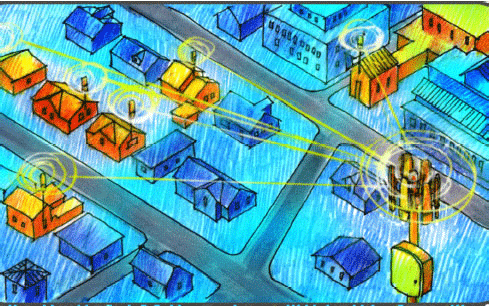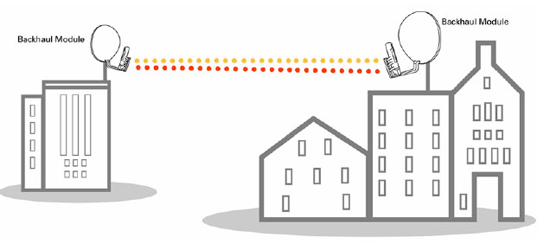New Page 1
 Industry Highlights
Industry Highlights
|
|
|
|
Motorola Canopy Wireless Broadband |
|
|
|
New Page 1

|
| |
 Motorola
MOTOwi4™ Wireless Broadband Products Motorola
MOTOwi4™ Wireless Broadband Products
Motorola MOTOwi4™ solutions are currently hard at work supplying
efficient, cost-effective wireless connectivity and access in more
than 4,000 networks in 120 countries around the world. One of the
best ways to demonstrate the flexibility and efficiency of MOTOwi4
technologies is to show you how some of our customers around the
world are using our solutions to help increase revenue streams,
improve safety, increase productivity, create community and enhance
the bottom line. The MOTOwi4 portfolio of integrated wireless
broadband solutions empowers you to capture, connect, communicate
and control IP-based voice, video and data in real time both indoors
and outdoors. It enables you to provide fixed, portable, nomadic and
mobile applications. Equally important, deployment can be
accomplished in days, not weeks or months. MOTOwi4 solutions offer a
broad range of flexible, cost-effective, mix-and-match options to
fit virtually any network and business model: WiMAX, fixed
broadband, Metro WiFi and mesh solutions and Broadband over
Powerline (BPL). |
|
|
Motorola
Canopy Wireless Broadband, System Overview
Canopy Wireless Broadband
Motorola’s new wireless broadband offering, the Canopy™ system makes
delivering low-cost broadband wireless Internet to consumers and
businesses alike faster and easier than ever before.
That’s because the Motorola Canopy Broadband Wireless Internet
Platform solution is easily deployed and extremely cost-effective,
so service providers can focus on delivering high-speed,
high-quality service to their customers.
Motorola Canopy™ is currently deployed in many countries and is
available in various frequencies to suit your regional needs.
The Canopy System
The Motorola Canopy Wireless system provides cost-effective
high-speed Internet access to residential and business customers
alike. The Canopy family of products can help service providers
deliver broadband service to local customers as well as improve the
utilization of their existing network.
The Canopy broadband wireless platform is highly scaleable and
exhibits low susceptibility to interference requiring no elaborate
frequency planning and coordination. The Canopy hardware draws
little power and its packaging is unobtrusive. The equipment uses
antennas of only moderate gain resulting in minimal requirements for
aiming the units. Hence, installation is easy, in contrast to many
of the higher frequency solutions currently available. Finally, the
built-in visual feedback installation indicators allow the unit to
be installed by virtually anyone. These characteristics facilitate
initial deployment and network expansion as capacity needs increase.
Figure 2 illustrates how the Canopy system with its simple equipment
makes it easy to build your own Internet access network.

Figure1. Canopy Wireless System
As shown, the system has application for serving enterprise
properties, such as schools, municipalities, hospitals and small
business campuses. It is also an excellent system for serving
residential single family and multi-family housing units with users
experiencing data rates in excess of 6 Mpbs per subscriber. The
Canopy Wireless system enables broadband access deployment with a
wireless point of presence that can be connected directly to
broadband infrastructure or indirectly via a wireless backhaul link
to fiber or microwave network infrastructure. Figures 2 and 3 depict
Canopy in its various configurations (point-to-multipoint and a
point-to-point configuration).

Figure 2. Canopy Technology in a Point-to-Multipoint Configuration
A wireless access point can contain anywhere from one to six Canopy
sector transceiver(s). Each transceiver delivers 10 Mbps
connectivity with up to 200 subscribers per sector, ensuring
omnidirectional coverage within a two-mile radius. Six transceivers
have an aggregate capacity of 60 Mbps.
To increase capacity beyond 60 Mbps, additional transceivers can be
easily co-located on an access point resulting in up to 12
overlapping sectors for aggregate data rates up to 120 Mbps.
Transceivers interface with the network infrastructure routers and
the subscriber computers via 10 or 100 baseT auto sensed Ethernet.

Figure 3. Canopy Technology in a Point-to-Point Configuration
Bandwidth efficiency is achieved using a proprietary, exceedingly
robust modulation scheme that allows for superior co-channel
performance and mitigation of interference from other systems
operating in the same frequency bands.
Canopy systems are engineered to compensate for the propagation
problems associated with common variations in weather such as rain,
fog or snow. These problems largely affect the operation of numerous
more expensive high bandwidth systems that utilize upper microwave
spectrum.
Benefits of the Canopy Wireless System
- The Motorola Canopy Wireless Internet Platform delivers a
telecommunications link that supports high speed data throughputs
while requiring significantly reduced capital investments and lower
deployment costs than other broadband technologies. Benefits
include:
- Reliability and Availability – The Canopy system is designed
around the philosophy of inexpensive hardware with redundancy where
needed. This allows the Canopy system to be a very cost-effective
yet highly reliable/available solution.
- Quality of Service and Capacity -- Ensuring that bandwidth is
available for a range of data services to all subscribers is an
essential requirement. The interference rejection characteristics of
our system allow Motorola to provide aggregate system capacities
that are far greater than the signaling rates alone might indicate.
- Security and Authentication – Privacy and integrity of data are
key considerations of broadband subscribers. Security and
authentication to prevent unwanted access to critical data or
services are necessary for any broadband system. Canopy uses
industry proven authentication and encryption technologies to ensure
that the service provider maintains control of the network.
- Mitigation of Interference – As wireless broadband services
become more widespread and unlicensed spectrum becomes more crowded
coexistence or mitigation of signal interference becomes a greater
consideration. The underlying modulation scheme used by the Canopy
system provides one of the best interference rejection systems
available and far surpasses the performance of competing
technologies in the unlicensed band.
- Reduced Installation & Deployment Costs and Time -- Network
service providers have faced significant challenges in reducing
wiring and installation costs in deploying complex systems. The
Canopy technology easily supports network configuration changes on
either a permanent or temporary basis.
- Reduced Customer Support Costs -- Service outages and customer
calls can rapidly drive-up operating costs. Canopy utilizes
effective network management tools and detects system outages to
minimize these costs.
|
|
Request Quote or Information
|
| |
|